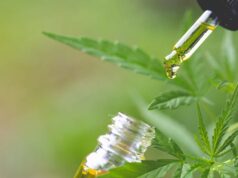
The legalization of adult-use cannabis in Massachusetts has ushered in a brave new world for adult past times, including a first for many of us — the opportunity to legally grow cannabis outdoors. Massachusetts state law allows for adults to cultivate up to six plants per adult at home (no more than 12 plants per household). Plants must be grown on private property, guarded by either lock or security device, and not visible from a public place without the use of binoculars or aircraft. Generations have fought hard for the right to possess and cultivate cannabis, but is it really just as easy as planting a seed in the ground? What benefits do you get from growing your own plants? Does cannabis grow outdoors in New England? I set out to answer all these questions as I embark upon a new rite of passage — growing cannabis for the first time, in my outdoor home garden.
Seeds
The first step — getting cannabis seeds — can be quite a challenge. Licensed Massachusetts medical dispensaries and adult-use retail stores have yet to sell cannabis seeds or plant cuttings known as clones. Growers may order seeds from online “gray market” retailers from Europe and the United States, which get around national law with the disclaimer that the seeds are for “souvenir” or “ornamental” purposes.
Benjamin Morgan-Dillon, a cannabis educator and owner of Acadia Farms in Rehoboth, encourages first-time growers to attend local cannabis conventions, such as the Harvest Cup in Worcester, or the New England Cannabis Network (NECANN) in Boston, to buy cannabis seeds. They retail for about $10/seed and often come in packs of 10 for $100. He says he likes to buy from Worcester-based Green Team Genetics (he gets “Coco Lemon” and “Milkbone” strains) and Mosca Negra Seeds (“Raspberry Boogie” is his strain of choice from them).
He recommends first-timer growers stick with automatic flowering (“auto”) seeds, which will ensure the plant yields cannabis flowers without following the strict light exposure regime typically required. Auto plants also tend to be smaller and stealthier, which may be well suited for discrete garden growing. For outdoor cultivation, Morgan-Dillon suggests to start from cannabis seeds instead of clones, which will result in heartier and more disease-resistant plants.
Soil
First-time growers will also have to make decisions about the type of soil, soil amendments, and fertilizers to use. Beyond backyard dirt and regular potting soil, growers may opt to purchase a super spoil (premixed with nutrients and amendments) or mix their own. Morgan-Dillon likes to create his own soil using a recipe of the following:
1/3 local, organic compost
1/3 aeration mix (lava rock or pumice, buckwheat husks or rice hulls, and vermiculite)
1/3 soil conditioner (peat moss or cocoa coir)
Cannabis needs nitrogen, phosphorous, and potassium to thrive. A wide variety of pre-mixed nutrients and package fertilizers are readily available at grow shops or garden centers. Growers preferring a clean, organic product may add lobster shells, kelp meal, crab or shrimp chitin (from shells), and oyster flowers to homemade soil and create a healthy, no-till living soil by including worms, insects, fungi, healthy bacteria, and compost in their grow.
When you’re ready to purchase your supplies, head to your local grow shops or garden center. Doug Andrews of Here We Grow in Hadley helped to guide me through my soil selection and potting needs. It’s easy to be overwhelmed by the sheer number of choices and innovative garden gadgets, but Andrews expertly paired me with a Coast of Maine organic super soil mix (1.5 cubic feet) containing lobster shells, kelp, worm casings, peat moss, and cocoa coir for about $30. Next, we selected a couple of 15-gallon Go Pro grow bags with handles (sized to contain a small adult plant) — about $10 each.
For my grow project, each plant will take one-and-a-half bags of super soil mix to fill a 15-gallon grow bag. Grow bags are an aboveground alternative to planting directly in the soil. The bags are made of recycled materials and may be reused several times.
“The great thing about grow bags is that you can move them,” Andrews says. “If guests come over, you can stow your plants away. And you can chase the sunlight around your yard or move your plants to a better spot.”
Germination
I left the grow shop full of supplies and ready to get down to business. My next step will be to grow the seeds indoors.
“I use a shot glass to germinate my seeds,” Morgan-Dillon says. “I prepare my seeds by rinsing them in hydrogen peroxide, and then a couple rinses of water. Place the seeds in a shot glass of room temperature water, to soak, in a dark place at 65 to 75 degrees, and the seeds should sprout in 24 to 72 hours.”
The seed should then be planted in a small pot with soil and watered. And then you wait for the magic to happen. It will take the seedling approximately a month until it is large enough (8-12 inches tall) to be replanted outdoors. Your cannabis seedlings will require a controlled light schedule of 18 hours direct light and six hours darkness. Many growers use a grow tent and lights to control schedule. If you start growing around 4/20, your plants should be ready be planted outdoors by June.
Picking a site
First time growers should carefully consider the location when growing. Morgan-Dillon recommends that your growing site has clear east-to-west sunlight exposure, and should face southward, to capture the full day’s light. Carefully scan your grow site to ensure there are no trees or buildings blocking light or air flow. Growers may choose from a variety of growing environments outdoors, from planting the seedling directly into the ground to planting in raised flower beds.
You will want to ensure your plants are secured, for safety, privacy, and legal compliance. While the law doesn’t prescribe the type of lock or security device growers must use, home security cameras, fences, and lockable greenhouses are all options. Northampton cannabis consultant Ezra Parzybok has grown plants in a converted, portable dog kennel. For privacy, Nicole Stetzer of Here We Grow says that some customers use shade cloth, affording both privacy shading and airflow.
It’s good to know that, in the event of a child or pet accidentally consuming raw cannabis, the Tetrahydrocannabinol (THC) in the plant has not yet been activated and thus will not produce the same intoxicating effects as when cannabis is smoked or baked into edibles. Nonetheless, it is important to promptly contact the appropriate medical professionals and/or poison control to ensure health and safety.
Greening your thumb
Once the plants are in the ground, growers will need to water and monitor their plants daily. If utilizing a plant bag, a properly hydrated plant will feel heavy to lift. If your plant leaves droop, it’s a clear sign that the plant needs more water. Morgan-Dillon recommends weekly light defoliation of damaged or light-blocking fan leaves and to strip the bottom of mature plants about 8 to 12 inches from the ground, to help keep moisture at bay and pests off the leaves. Growers may plant cover crops, such as white clover, sugar peas, and buckwheat, at the base of their cannabis plants, to provide secondary nutrition and retain moisture.
Approximately four to six weeks from seed germination, the plant will reveal its sex. Only female cannabis plants produce flowers and the grower must eliminate the male plants before they pollinate the females. Growers often germinate more seeds than plants intended to grow because approximately half the seedlings will be eliminated. But remember — seedlings are counted in the state limits on plants, so keep an eye on your total plant numbers. Novice growers may opt to purchase feminized seeds, which take the guessing work out of sexing a plant.
Your mature cannabis plants should be ready to harvest anywhere between late August to October. It’s important to not let your plants flower too long or the plant may hermaphrodite and seed. Mold (in the form of bud rot) is a common fall-time headache, often precipitated by the fluctuating temperatures and moisture locked within the flowers. Watering in the early morning and sheltering your plant from morning dew and rain can help to keep bud rot at bay.
Good luck to us all!
Karima Rizk is an Easthampton-based cannabis advocate, entrepreneur, and professional. She can be reach at [email protected].














